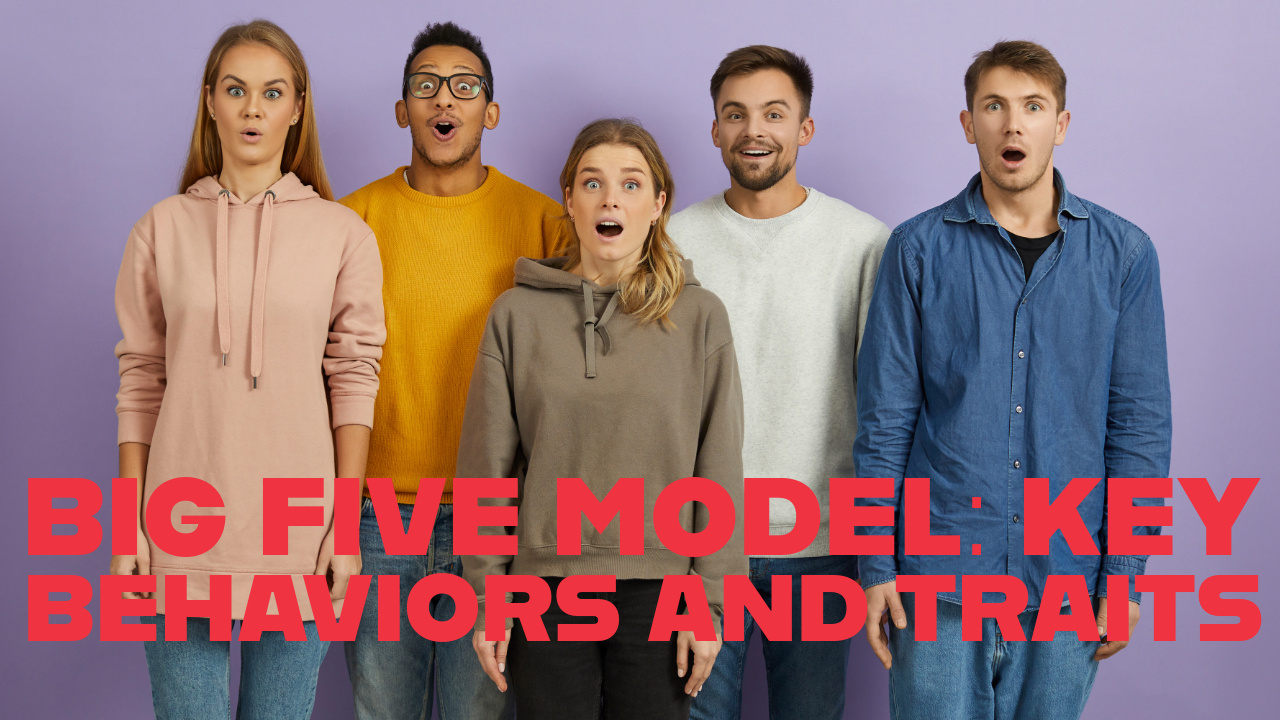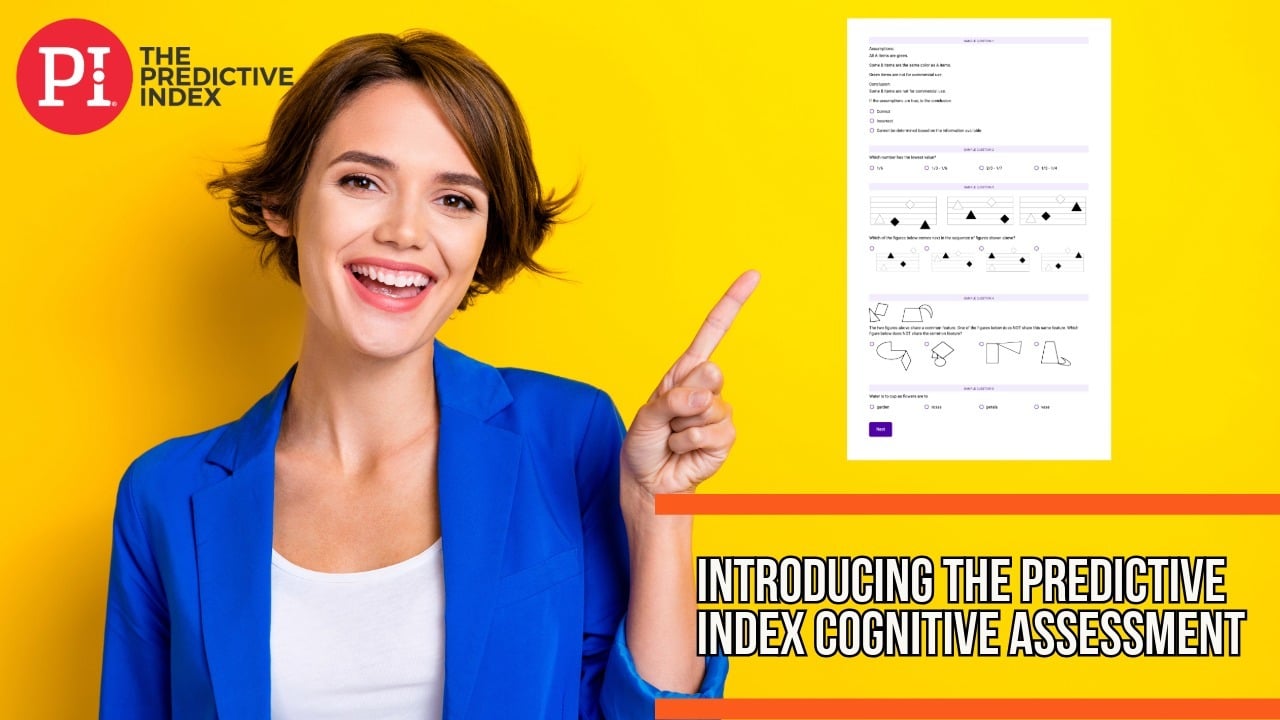2 min read
Exploring What the Predictive Index Does Not Measure
Tools like the Predictive Index (PI) have become instrumental in assessing and predicting workplace behaviors and dynamics. While such tools offer...
4 min read
Damon Clark : Nov 26, 2024 10:15:00 AM
%20blog.jpeg)
The Predictive Index is intentionally crafted to assess workplace behaviors rather than deeper personality traits. By focusing on four primary behavioral drives—Dominance, Extraversion, Patience, and Formality—the PI assessment hones in on specific work-related tendencies that inform how a person operates in a professional setting. These drives are designed to reflect an individual's motivations and preferences at work, such as whether they thrive in structured environments or prefer working autonomously. In contrast, Neuroticism is more about emotional sensitivity and stability, which may not directly translate into actionable insights about an employee's behavior in a specific job role.
One of the primary goals of PI is to predict how a candidate’s behavioral traits will align with job performance. Traits like Dominance, Extraversion, and Patience are more clearly linked to practical work outcomes, making it easier for managers to understand and predict how someone will perform in a given role. Neuroticism, however, is a broader measure of emotional reactivity and doesn’t always have a direct or predictable impact on workplace behaviors. For example, someone might experience personal stress but still maintain high productivity and strong team interactions. Thus, assessing Neuroticism might not consistently predict job-related behavior or performance, making it a less reliable predictor within the PI framework.
Neuroticism deals with one’s emotional stability and often reflects aspects of psychological wellness, which can be a sensitive area to assess, particularly in professional settings. High scores in Neuroticism are sometimes perceived as indicators of vulnerability to stress or anxiety, which may raise privacy concerns. Employers must be careful not to let assessments inadvertently label or stigmatize employees based on their emotional responsiveness. PI is structured to be a non-invasive assessment, and excluding Neuroticism aligns with its aim to respect individual privacy by avoiding traits that could be seen as personal or mental health-related.
Emotional stability is highly context-dependent, with a person’s emotional responses varying widely depending on factors such as work environment, team culture, or even daily stressors outside of work. PI aims to offer consistent, objective insights into workplace behaviors, which are relatively stable and less influenced by situational variables. Neuroticism, on the other hand, can fluctuate depending on a person’s circumstances, making it harder to measure objectively in a single assessment. As such, PI focuses on stable behavioral drives that offer a clearer and more consistent basis for hiring and development decisions.
PI assessments are designed to equip managers with actionable insights on how to effectively lead and interact with their teams. The behavioral drives measured by PI translate directly into strategies for communication, motivation, and team alignment. For instance, understanding that a team member scores high on Dominance can inform a manager’s approach to delegating tasks or giving feedback. Neuroticism, however, doesn’t lend itself as readily to actionable, work-focused interventions. A high Neuroticism score might imply that someone is more reactive to stress, but it doesn’t provide guidance on how a manager might best support or communicate with that individual in day-to-day operations.
While PI doesn’t measure Neuroticism, other assessments can fill this gap if understanding emotional stability is essential for a particular role. The Big Five personality assessment, for example, measures Neuroticism alongside other traits like Conscientiousness and Openness, providing a fuller personality profile that may be useful for leadership roles or emotionally demanding positions. Organizations looking to gauge emotional stability can use the PI assessment in tandem with tools like the Big Five or Emotional Quotient (EQ) assessments, enabling a more comprehensive understanding of candidates’ and employees' personality traits.
Excluding Neuroticism aligns with PI’s goal of promoting a positive and non-judgmental approach to employee assessment. By focusing on work-specific behaviors, PI avoids assigning labels that may come with bias or judgment. Traits like Dominance or Extraversion are typically viewed neutrally, providing managers with a better understanding of work habits without attaching connotations of emotional volatility. This focus helps ensure that assessments are fair and equitable, centering on the practical aspects of job performance.
While the Predictive Index doesn’t measure Neuroticism, it provides a focused lens on behavioral traits that can directly influence work outcomes. By concentrating on behaviors that are most relevant to workplace performance, PI offers practical, actionable insights that empower leaders to align talent with organizational goals effectively. For companies seeking a deeper dive into personality traits, combining PI with additional assessments can yield a more holistic view of employees' emotional and cognitive traits.
In the end, PI’s exclusion of Neuroticism underscores its core purpose: to provide a streamlined, accessible, and work-focused assessment tool. By understanding both the strengths and limitations of PI, organizations can make the most of its insights while being mindful of when additional measures might enhance their talent assessment strategy.
|
|

2 min read
Tools like the Predictive Index (PI) have become instrumental in assessing and predicting workplace behaviors and dynamics. While such tools offer...

3 min read
When it comes to understanding personality in a nuanced way, the Big Five personality model is widely recognized in psychology and the workplace....

3 min read
Introducing the Predictive Index Cognitive Assessment Welcome to Tools of Talent Optimization, where we break down the key Predictive Index modules...